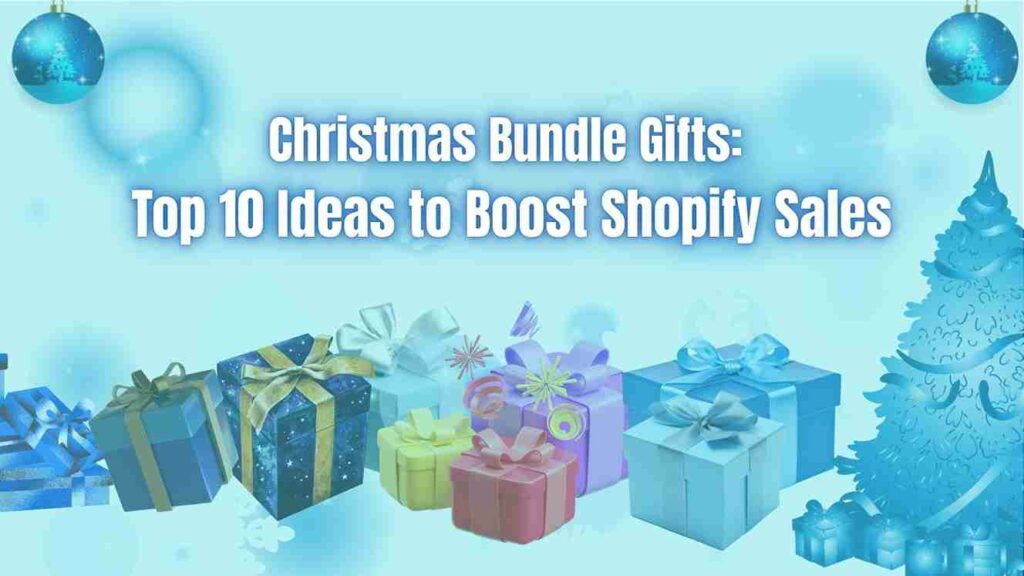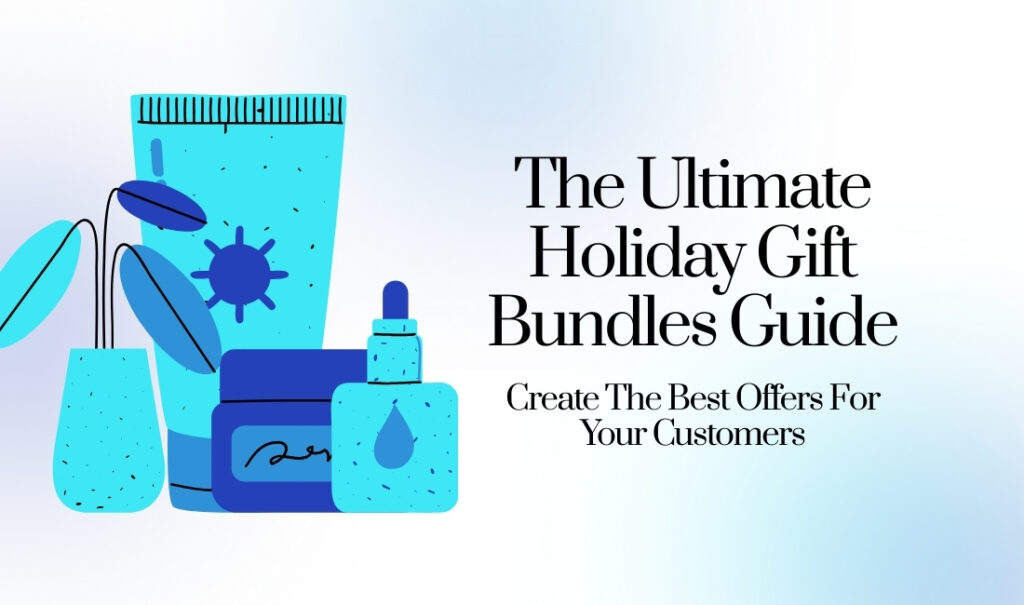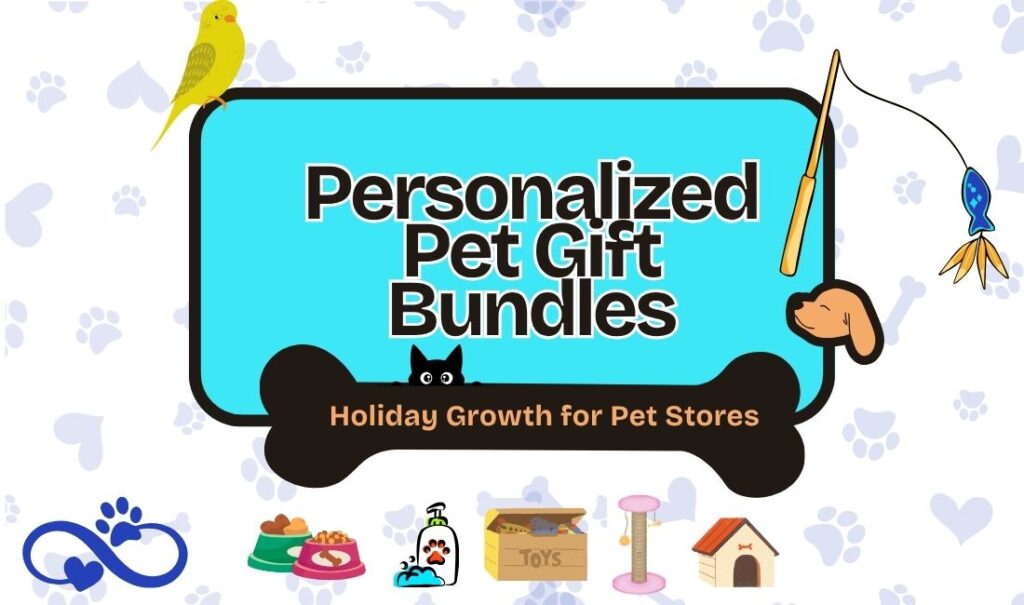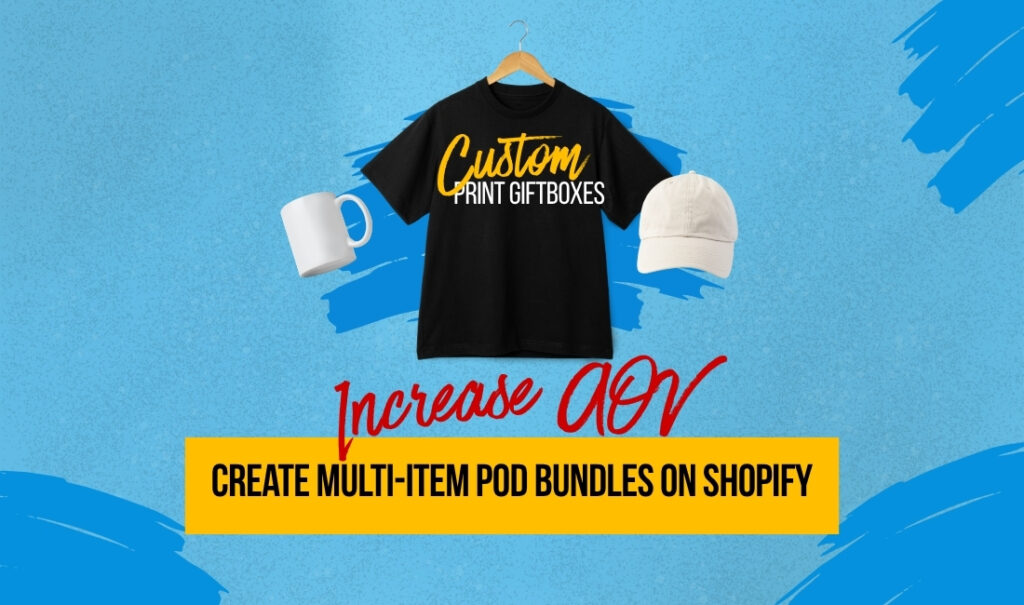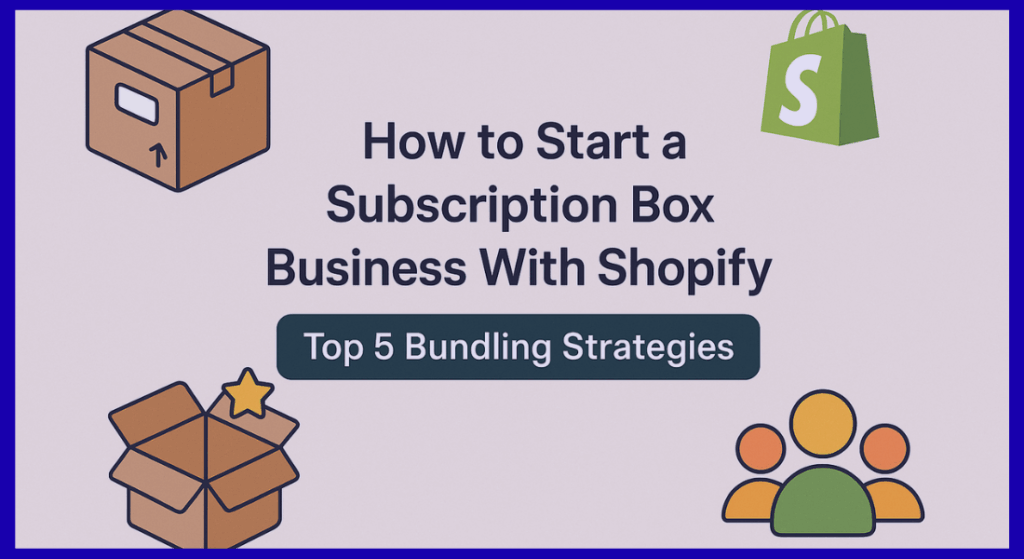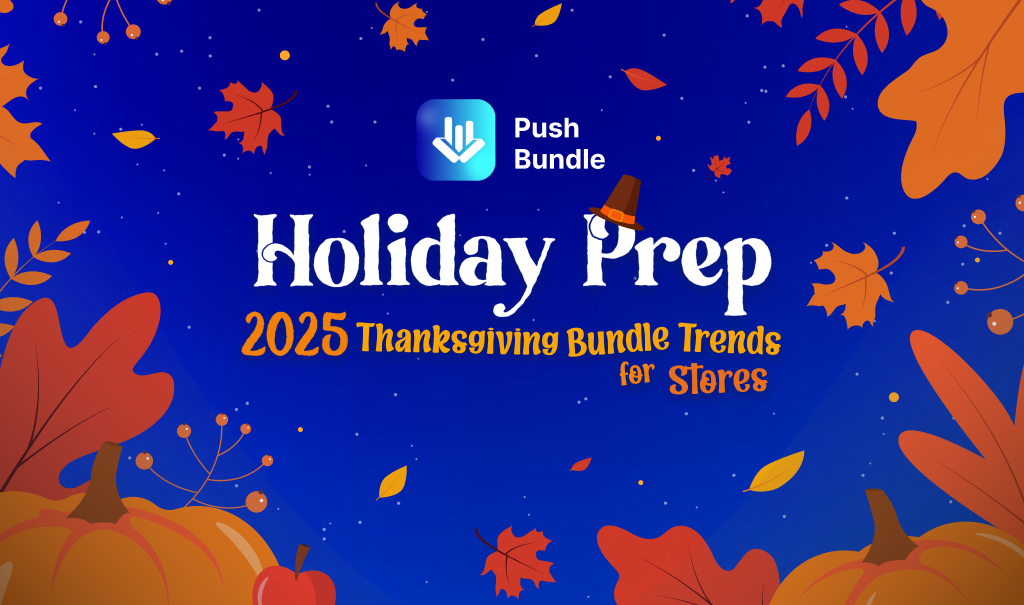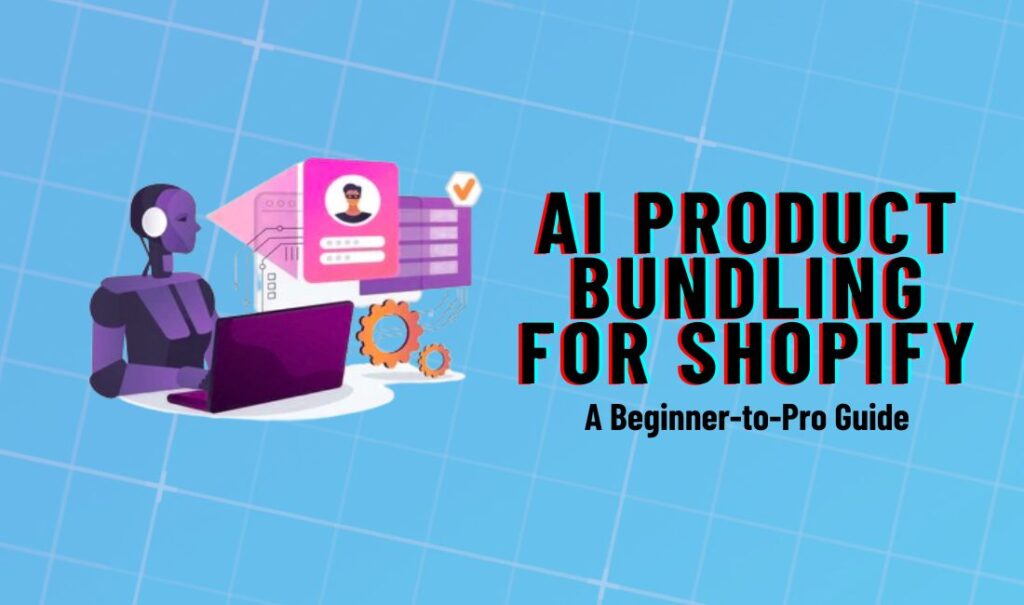
AIによる商品バンドルは魔法のように聞こえます。これをオンにするとバンドルが表示され、売上が伸びます。 製品バンドルのトレンド アルゴリズムはあなたのストアの成否を左右するかもしれません。すべてのShopifyストアがアルゴリズムに任せられる準備ができているわけではないからです。
バンドル販売とは、「3個購入で15%割引」や「よく一緒に購入される商品」のように、商品をグループ化して注文額を増やすことを意味します。AIは、顧客の行動や販売データに基づいてバンドル販売を自動的に推奨することで、自動化を実現します。
素晴らしいですね!商品データがクリーンでトラフィックが安定していれば、実現可能です。このガイドでは、AIによる商品バンドルとは何か、Shopifyでどのように機能するか、そして実際に試す前に成功するための準備方法について解説します。
- 実際の顧客行動に基づいて商品の組み合わせを自動的に提案することで、平均注文額 (AOV) とコンバージョンを向上させます。
- 売れ筋商品とインテリジェントなバンドル商品を組み合わせることで、動きの遅い在庫の販売を促進します。
- AI を活用して何百ものバンドルの組み合わせを作成およびテストすることで手作業を減らし、時間とリソースを節約します。
- 個々のショッピング行動に合わせてカスタマイズされたバンドルで顧客エクスペリエンスを強化し、信頼とリピート購入を促進します。
- AI が既存の強みを強化するため、クリーンな製品データと整理されたストア設定を維持することで成功を確実にします。
目次
AI を活用した製品バンドルとは何ですか?
AIによる商品バンドル機能は、過去の注文、商品閲覧、クリック数などのデータを活用し、顧客が購入する可能性の高いバンドルを提案します。これにより、推測による作業は自動化ロジックに置き換えられます。
「シャンプー + コンディショナー」のようなバンドルを手動で作成する代わりに、AI ツールは顧客が通常何を一緒に購入するかを分析し、動的なバンドルをリアルタイムで提案します。
手動またはルールベースのバンドルは予測可能です。組み合わせと割引はお客様が設定します。AIバンドルは適応型で、ユーザーの行動、トレンド、在庫状況に応じて変化します。
Shopifyの例として、売れ筋のアクセサリーと売れ筋商品を組み合わせたり、ファッションアイテムをまとめてコーディネートにしたり、工具を組み合わせて仕事に特化したキットにしたりすることが挙げられます。B2Bストアでは、バルクSKUをグループ化したり、パックを再注文したりできます。
つまり、AIバンドルとは、既に機能しているものを取り込み、それをインテリジェントに拡張するものです。しかし、効果的に機能させるには、良質なデータと賢明な戦略が必要です。
なぜ重要なのか:真のメリット(成功に向けて準備が整っている場合)
AIによる商品バンドルは、手間をかけずに売上アップに貢献します。実際の購買行動に基づいて、顧客が購入する可能性が最も高いバンドルを自動的に作成します。まるで、データに基づいて24時間365日働き、平均注文額(AVA)の向上に尽力してくれる販売アシスタントがいるかのようです。
1. AOVとコンバージョン率の向上
AIバンドルは、顧客が興味を持つ商品の組み合わせを推奨します。これにより、平均注文額(AVA)が向上します。AIは、買い物客が何を閲覧し、クリックし、購入するかを監視します。そして、最適なタイミングで最適なアドオンを提案します。顧客が自ら関連商品を見つけるのを待つのではなく、厳選されたバンドル商品を顧客の目の前に提示します。これにより、強引な売り込みをすることなく、顧客の購入意欲を刺激します。カートに表示される商品数が増え、注文あたりの総売上高も増加します。
2. 動きの遅いものを早く排除する
在庫に溜まった商品がございましたら、AIがそれらの売れ筋商品を効果的に組み合わせ、最適なセット販売を行います。値引きキャンペーンを実施したり、在庫処分したりする代わりに、アルゴリズムが自然な形で商品を販売する方法を見つけます。これにより、利益率を損なうことなく不良在庫を削減できます。これにより、商品構成の鮮度が維持され、キャッシュフローが健全になります。
3. 手動によるバンドル作業の削減
バンドルを手動で作成してテストするには何時間もかかり、ほとんどが推測作業です。AIは、ストアで既に効果を上げているものに基づいてバンドルを自動生成することで、その負担を軽減します。AIは、あなたがこれまでよりも速く、何百もの組み合わせをテストできます。管理は引き続きお客様自身で行いますが、大変な作業は裏で行われます。つまり、バンドルを一つ一つ作成する時間を減らし、戦略に集中できる時間を増やすことができます。
4. よりパーソナライズされた体験
自動商品バンドルは、各顧客がストアでどのように行動するかを学習し、一人ひとりに合わせたショッピング体験を実現します。初めてご来店のお客様にはスターターキットを、リピーターのお客様には過去の購入履歴に基づいたバンドルをご案内します。このようなパーソナライゼーションは、お客様の信頼を築き、リピート購入の可能性を高めます。マーケティングというよりは、役立つおすすめ情報のような感覚です。お客様はアップセルされていることに気づかずに、必要なものを手に入れることができます。
しかし、ここに落とし穴があります: これらのメリットは、ストアが既に整理されている場合にのみ実現されます。AIバンドルは、効果を上げている部分を増幅させるものであり、壊れたデータや不明確な目標を修正することはできません。
AIが機能するために必要なこと:整備すべき5つのこと
AI製品のバンドル化に取り組む前に、これらの基本事項を整理しておきましょう。この部分を省略すると、バンドルが乱雑になり、結果が悪くなります。
1. クリーンな製品データ
まず第一に、商品データは整理されている必要があります。商品名、タグ、バリエーションが乱雑だったり一貫性がなかったりすると、AIはどの組み合わせが合うのか判断できません。こう考えてみてください。カタログを一目で理解できなければ、AIも理解できません。商品の名前を整理し、コレクションを整理し、タグに意味を持たせることに少し時間をかけましょう。そうすることで、AIがしっかりとした基盤を構築できます。
2. 十分な店舗データ
AIによるバンドルは、学習に十分なデータがある場合にのみ機能します。最初の数十件の注文しか集まらない場合、システムは分析に必要な行動や販売パターンを十分に把握できません。理想的には、少なくとも月に100~200件の注文があれば、AIはどの商品が一緒に購入されることが多いかを把握するのに十分なシグナルを得ることができます。そうでなければ、AIは単なる推測に過ぎず、手動で行う必要があります。
3. 明確な目標
バンドル販売で何を実現したいのかを明確にする必要があります。平均注文額の向上を目指しているのでしょうか?過剰在庫商品の処分を目指しているのでしょうか?それともパーソナライズされた体験を提供したいのでしょうか?目標によって、設定方法や成功の測定方法が変わります。目標がなければ、どんなに賢いAIでも、正しい方向に導くのに苦労するでしょう。
4. バンドルに関する基本的な知識
AIに任せる前に、基本を理解しておく必要があります。つまり、組み合わせや組み合わせといった様々なバンドルの種類について理解しておく必要があります。 数量割引、またはよく一緒に購入される商品。AIが提案する商品を理解し、何かおかしい点があればすぐに見つけ出すのに役立ちます。バンドルのエキスパートである必要はありません。良いロジックと悪いロジックを見分けられる程度の知識があれば十分です。AIのおかげで作業は楽になりますが、だからといって基礎を省略していいというわけではありません。
5. 顧客の洞察
顧客をどんなアルゴリズムよりもよく理解しているのは、あなたです。AIは理解を深めるのに役立ちますが、優れたデータがなければ、購入者の心理を読み取ることはできません。オーディエンスをセグメント化し、行動を追跡し、様々なタイプの顧客が何を求めているかを徹底的に考えましょう。システムにインサイトを多く取り込めば取り込むほど、バンドルはよりスマートになります。AIは、オーディエンスに関する既存の知識を増幅させる時に最も効果を発揮します。
AIツールを使う前に、これらの5つの点を修正しましょう。不要なバンドルを回避し、AIのメリットを最大限に活用できます。
自動製品バンドルの仕組み(流行語の裏側)
AIバンドルツールは、ランダムな推測を行うのではなく、確立された機械学習技術を用いて、顧客の行動、販売パターン、製品の関係性を分析することで機能します。
基本的なプロセスは次のとおりです。
データを収集する
このツールは、ストアから、閲覧された商品、カートに追加された商品、まとめられた商品などの情報を取得します。
パターンを検出する
AI は、関連ルール (例: 「これを購入した人の 60% はあれも購入している」) やクラスタリング (関連するアイテムをグループ化する) などのアルゴリズムを使用して関係性を見つけます。
提案を生成する
これらのパターンを使用して、T シャツ + ジーンズ、レンチ + ドリル セットなどのバンドルの組み合わせを提案します。
テストと最適化
AIはこれらのバンドルのパフォーマンスを監視します。コンバージョン率が低いコンボは新しいものに置き換えられます。システムはライブデータから学習し続けます。
時間の経過とともに、バンドルはより賢くなります。季節性、新商品、突然の需要の急増に合わせて調整されます。古くなる静的バンドルとは異なり、AIバンドルはストアに合わせて進化します。
しかし、AIは既に十分に追跡している情報のみを改善できます。商品名に一貫性がなかったり、顧客が複数の商品を閲覧することが稀だったりすると、システムは十分な情報を把握できなくなります。
重要なポイントは、バンドルの有効性は、バンドルが取得する入力と監視する結果によってのみ決まるということです。
AI が作成できるバンドルの種類(およびそれぞれの使用タイミング)
AIツールは様々な種類のバンドルを自動構築できます。それぞれのバンドルの機能と使用タイミングは以下のとおりです。
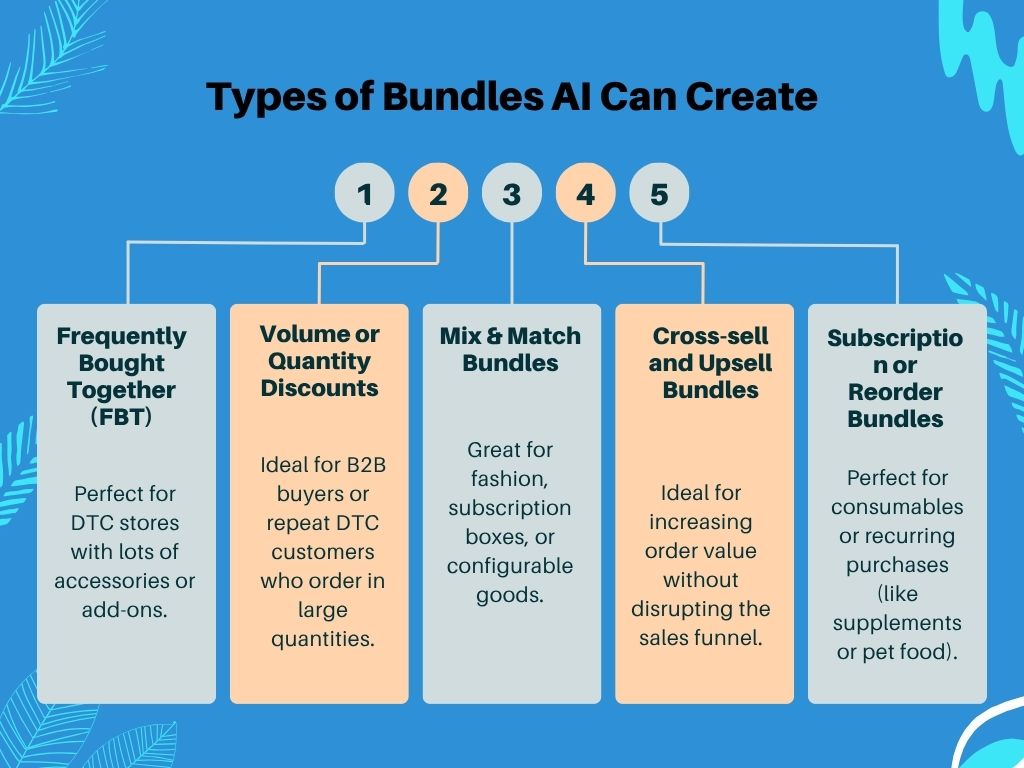
1. よく一緒に購入される商品(FBT)
商品ページに表示され、よく組み合わせられるアイテムを表示します。アクセサリーや追加アイテムを多数取り揃えるDTCストアに最適です。
2. 数量割引
AIは同じ商品をまとめてグループ化できます(「5個購入で10%節約」など)。B2Bバイヤーや、大量注文をするDTCリピーターのお客様に最適です。
3. ミックス&マッチバンドル
カスタマイズ可能なバンドルで、複数のバリエーションや商品をまとめて選択できます。ファッション、サブスクリプションボックス、カスタマイズ可能な商品などに最適です。
4. クロスセルとアップセルバンドル
カートやチェックアウトフローに表示され、関連商品やアップグレード商品を提案します。販売ファネルを阻害することなく、注文額を増やすのに最適です。
5. 定期購入または再注文バンドル
消耗品や定期購入(サプリメントやペットフードなど)に最適です。AIがタイミングを予測し、事前に充填された再注文キットを提供します。
プロのヒント:
すべてのバンドルタイプを一度に有効化しないでください。FBTやボリュームディスカウントなど、まずは1つのバンドルタイプから始め、パフォーマンスを追跡し、結果に基づいて拡張してください。
AIバンドルは、それぞれのタイプを適切な場所で活用することで効果を発揮します。例えば、FBTには商品ページ、アップセルにはチェックアウト、再注文キットにはメールといった具合です。バンドル形式は、購入者の購買行動に合わせて調整しましょう。
AI とルールベースのバンドル: どちらが最適でしょうか?
AI バンドルを使用するか、ルールに従うか迷っていますか? 判断に役立つ簡単な比較を以下に示します。
ルールベースのバンドル つまり、コンボを手動で作成するということです。組み合わせるものを決め、割引率を設定し、配置をコントロールします。以下の用途に最適です。
- 厳格な価格設定ルールのある卸売取引
- 小さなカタログを持つ店舗
- 予測可能な製品の組み合わせ
AIバンドル データを使用してバンドルを自動的に作成します。リアルタイムで適応し、簡単に拡張できます。以下の用途に最適です。
- 大規模なカタログや多数のSKU
- データがすぐに生成される高トラフィックストア
- バンドルを継続的にテストしたいブランド
始めたばかりの場合、またはカタログがシンプルな場合は、ルールベースのロジックから始めましょう。データが成熟したら、AIを追加してよりスマートに拡張します。
ステップバイステップ:AI 製品のバンドルを試す方法(圧倒されずに)
AI バンドルをいきなり始めることなくテストしてみませんか? 開始方法は次のとおりです。
1. カタログに適したAIツールを選択する
リアルタイムの提案、分析ダッシュボード、ビジュアルカスタマイズなど、注目すべき機能に注目してください。Shopifyデータとのスムーズな連携も確認しましょう。
2. ツールでストアをスキャンする
AI は過去の売上、トラフィック、製品タグ、在庫を取得してパターンを検出します。
3. 最初のバンドル提案を確認する
自動公開はしないでください。論理性を確認してください。商品は関連性がありますか?価格は妥当ですか? あなた バンドルを購入しますか?
4. 表示と価格をカスタマイズする
ブランドと顧客の言語を反映するように、バンドル名、ビジュアル、割引を微調整します。
5. 手動バンドルに対するA/Bテスト
2つのグループを使い分け、1つにはAIバンドル、もう1つにはオリジナルのコンボを表示します。コンバージョン率と注文額を追跡します。
6. パフォーマンスを定期的に監視する
分析結果を毎週チェックし、パフォーマンスの低いアプリを一時停止します。リアルタイムのフィードバックに基づいてAIが適応します。
まずは1~2種類のバンドル(FBT、ボリューム)から始め、2~4週間かけて効果を検証しましょう。重要なのは、継続的な関与です。AIは設定して放っておくツールではありません。
Shopifyマーチャントが犯しがちなミス
善意を持っていても、AIバンドルは失敗する可能性があります。以下の5つのよくある間違いを避けましょう。
1. レビューステップをスキップする
AIは完璧ではありません。ある顧客が2つの商品をまとめて購入したというだけで、ランダムに2つの商品をペアリングしてしまう可能性があります。バンドルは公開前に必ず監査を実施してください。
2. サイト上のバンドルを非表示にする
バンドル商品を3クリックもしないうちに隠すのはやめましょう。商品ページ、カートのポップアップ、メールなどで目立たせましょう。
3. 全員に同じバンドルを使用する
AIツールは多くの場合セグメンテーションが可能です。これを活用しましょう。リピーターと新規訪問者に異なるバンドルを提示しましょう。
4. ローンチ後の分析を無視する
バンドル広告をリリースするだけでは不十分です。AOV、クリックスルー率、コンバージョン率を追跡し、成果の低い広告を調整または削除しましょう。
5. 思考型AIが戦略に取って代わる
AIはツールであり、人間の洞察力に取って代わるものではありません。AIは既存の仕組みを強化するものであり、混沌から魔法を生み出すものではありません。
これらを正しく実行すれば、よりスマートに、より速く、より効果的に売れるバンドルを構築できます。
AIバンドルを最大限に活用するためのプロのヒント
AI 製品のバンドルで成功するには、次の 5 つのヒントを適用します。
1. パフォーマンスの高いSKUから始める
上位20%の商品をバンドルしましょう。トラフィックを獲得し、既にコンバージョンも達成しているため、AIレコメンデーションのテストに最適です。
2. 購入後のフローを活用する
チェックアウト後のサンキューページやメールでバンドル商品を提示しましょう。購入者は依然として購入意欲があり、バンドル商品に付加価値がある場合は、再度購入する可能性が高まります。
3. メールやSMSキャンペーンと組み合わせる
顧客のタグや行動パターンを利用して、セット販売のオファーを送信しましょう。例:「Xが残り少なくなってきましたか?10%オフの3個パックをゲットしましょう。」
4. 節約を明確に強調する
価格を並べて表示したり、割引率をパーセントで表示したりしましょう。AIバンドルは、価格が明確であればコンバージョンにつながる可能性が高くなります。「$12割引!」のようなビジュアル要素を追加しましょう。
5. テストを続ける
毎月バンドルレビュー日を設定します。パフォーマンスを確認し、季節や在庫状況に基づいてAIがバンドルを更新します。
AIは、放置せずに活用することで最大限の力を発揮します。スマートな戦略と組み合わせることで、成果を拡大させることができます。
次は何か: ShopifyにおけるAIバンドルの未来
AI バンドル分野は、特に Shopify エコシステム内で急速に進化しています。
Shopifyマジックとサイドキック まもなくダッシュボードに直接統合され、製品を作成または編集するときにバンドルの提案が提供されるようになります。
AIを活用した検索により、顧客は分かりやすい言葉でバンドル商品をリクエストできるようになり(「スタータースキンケアキットを見せて」など)、音声検索やチャットボットによるアップセルなどのツールも増加しています。
パーソナライゼーションは購入履歴にとどまりません。近い将来、バンドルは位置情報、天候、さらにはデバイスの種類に基づいて調整される可能性があります。
AI バンドルがよりスマートになるにつれ、焦点は基本的なコンボから、各訪問者に合わせて数ミリ秒単位でカスタマイズされたリアルタイムのパーソナライズされたオファーへと移行します。
今すぐストアを準備しましょう。クリーンなデータ、強力なカテゴリー、明確なバンドル目標があれば、次世代のShopify自動化ツールへの接続が容易になります。
結論
AIを活用した商品バンドルは大きな成果をもたらしますが、それはストア側の準備が整っている場合に限ります。ツールは強力ですが、クリーンなデータ、明確な目標、そして継続的なレビューが必要です。
始める前に、カタログを監査し、商品タグを整理し、様々なバンドルタイプの仕組みを理解しましょう。まずは小規模なところから始めましょう。「よく一緒に購入される商品」など、バンドルスタイルを1つ選び、数週間かけて結果を追跡しましょう。
自信がついたら、さらにバンドルを追加し、AIを活用して効果的な施策をスケールさせましょう。自動操縦ではなく、副操縦士として活用しましょう。
次のステップは?最もトラフィックの多い商品を選び、一緒によく購入されるものを確認して、最初のバンドルを今すぐテストしましょう。

